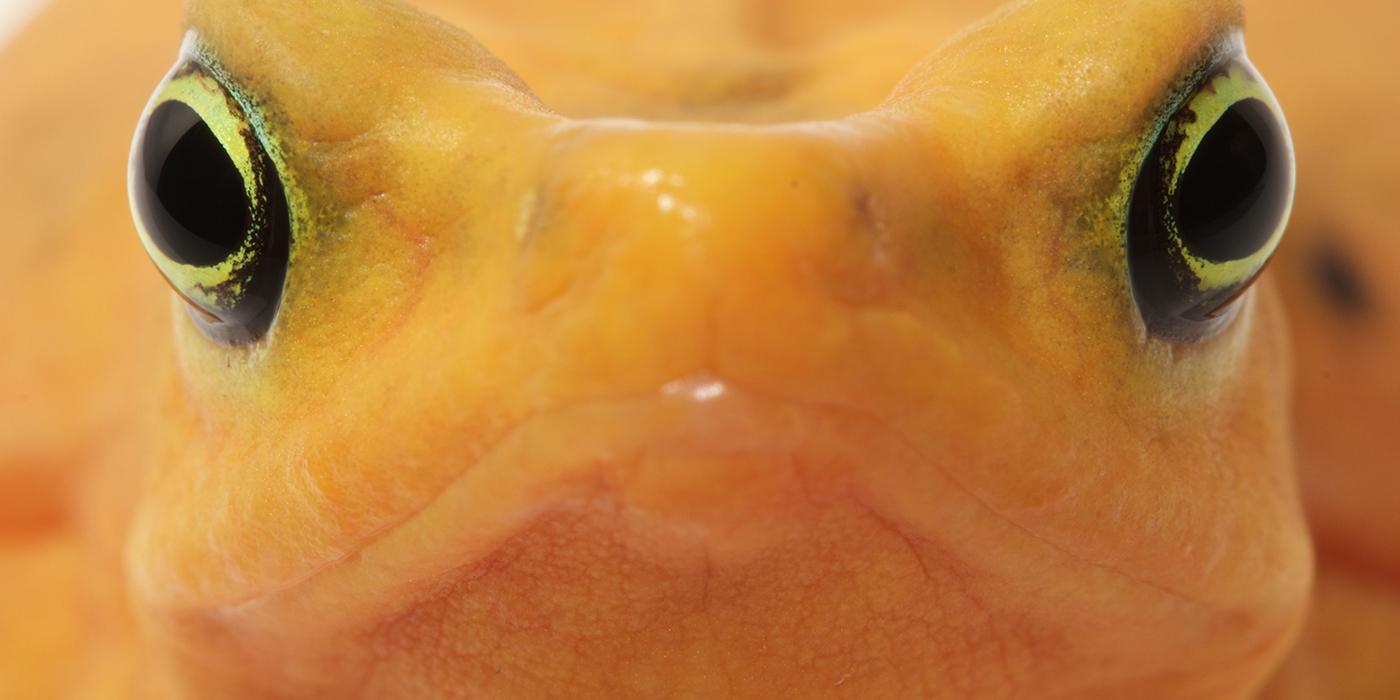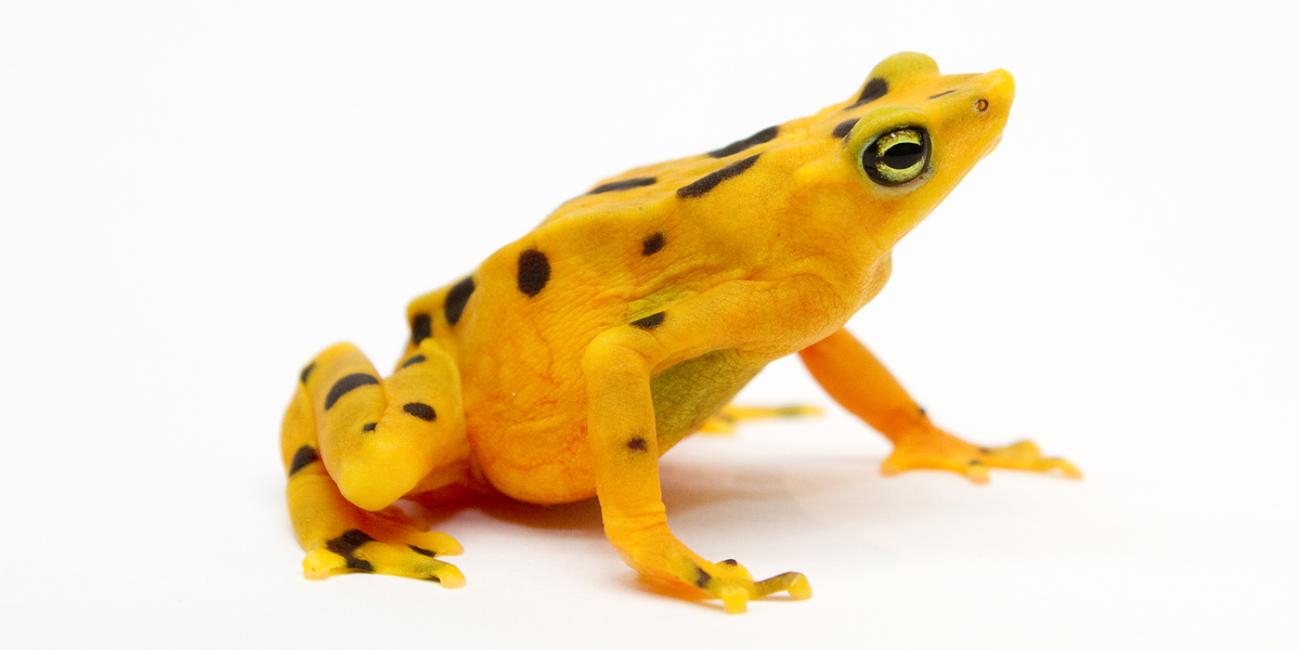Assisted Reproduction and Genome Resource Banking of Panamanian Golden Frogs
Scientists at the Smithsonian Conservation Biology Institute’s Center for Species Survival (CSS) are working to save Panamanian golden frogs by banking sperm and collecting biological samples to preserve and study genetic material from at-risk populations.
The Panamanian golden frog (Atelopus zeteki), extinct in the wild, is an iconic amphibian species endemic to Panama and now only exists in zoos and other breeding facilities. To preserve species integrity and provide healthy individuals for future reintroductions, conservationists need to maintain the genetic diversity of the population in human care. Assurance colonies of golden frogs may benefit from emerging genomics techniques and assisted breeding in association with the long-term preservation of sperm and cell lines.
CSS scientists Gina Della Togna and Pierre Comizzoli study the cellular physiology and the sensitivity to cold or freezing storage procedures. To date, CSS scientists have successfully cryopreserved sperm released in urine (from live individuals) and are applying this new method to bank sperm in captive colonies of other Atelopus species in Panama. Della Togna continues her work to optimize the collection of biological samples from genetically valuable individuals without sacrificing the animals, in the hope of improving sperm cell survival after freezing; implementing methods for recovering large numbers of viable eggs from living Panamanian golden frogs and artificially fertilizing them with preserved sperm; and optimizing the methods of cell line preservation and cultures.
CSS has a mobile laboratory unit, thanks to support from the Wood Tiger Foundation, that enables scientists to build an Amphibian Genome Resource Bank for threatened Atelopus species in the Neo-tropics. The primary research project is based at the Smithsonian’s National Zoo, with research animals provided by the Golden Frog Species Survival Plan, managed by the Maryland Zoo in Baltimore.













